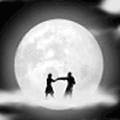|
Alma Tadema.org, welcome & enjoy!

|
|
|

|
|
MAULBERTSCH, Franz Anton
Austrian Painter, 1724-1796
Austrian painter. His work as a painter of both oil paintings and frescoes on religious, mythological and occasionally worldly themes spanned the second half of the 18th century, adapting a Late Baroque training to the onset of Neo-classicism but remaining strikingly individual throughout. His fresco work, mostly still in situ in widespread central European locations, came at the end of an artistic tradition and was for long neglected, being far from major cultural centres; but it is now seen to establish him as one of the leading painters of his century Related Paintings of MAULBERTSCH, Franz Anton :. | Annunciation | Adoration of the Shepherds (detail) sg | Apotheosis of a Hungarian Saint | Joseph and his Brothers t | Annunciation (study) sg | Related Artists: William Smith Jewett1789-1874
William Smith Jewett Galleries Jacques-Eugene Feyen(1815, in Bey-sur-Seille, Meurthe-et-Moselle - 1908) was a French painter.
The elder brother of painter Auguste Feyen-Perrin, Jacques-Eugene enrolled at the Ecole des Beaux-Arts and studied under Paul Delaroche. He had a notable career at the Paris Salon from 1841 to 1882. Vincent Van Gogh was a fan of Feyen and describes him as, "one of the few painters who pictures intimate modern life as it really is, and does not turn it into fashion plates." He set up studio and settled in summer in the town of Cancale.He spent several months every year painting views of Cancale, the oyster-picking Cancalaises and the bay of Mont St. Michel, and his paintings still enjoy a steady fame.
Delacroix AugusteFrench , 1809-1868
|
|
|
|
|
|
|
|
|

All the Alma Tadema's Oil Paintings
 Supported by oil paintings and picture frames
Supported by oil paintings and picture frames

Copyright Reserved
|

